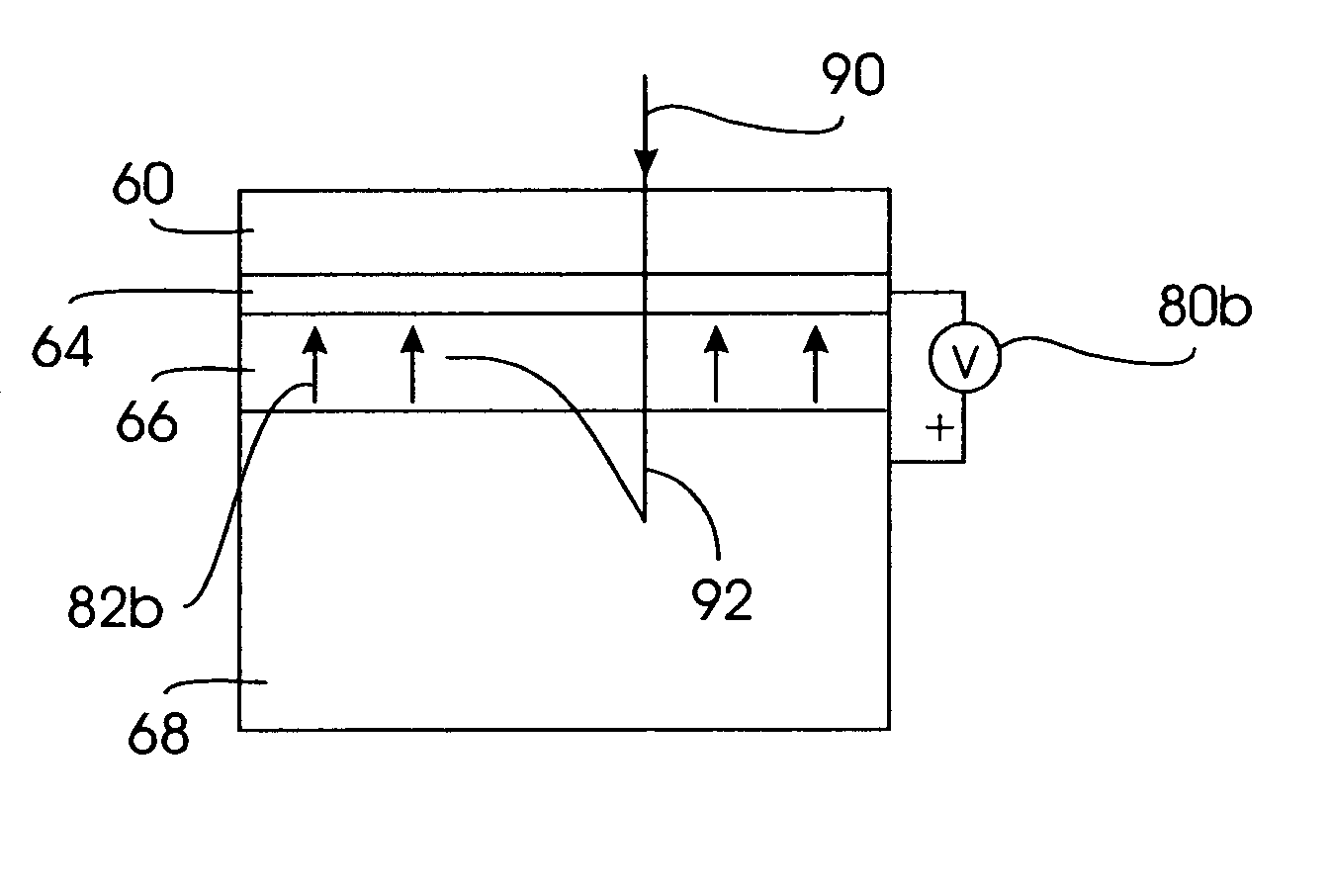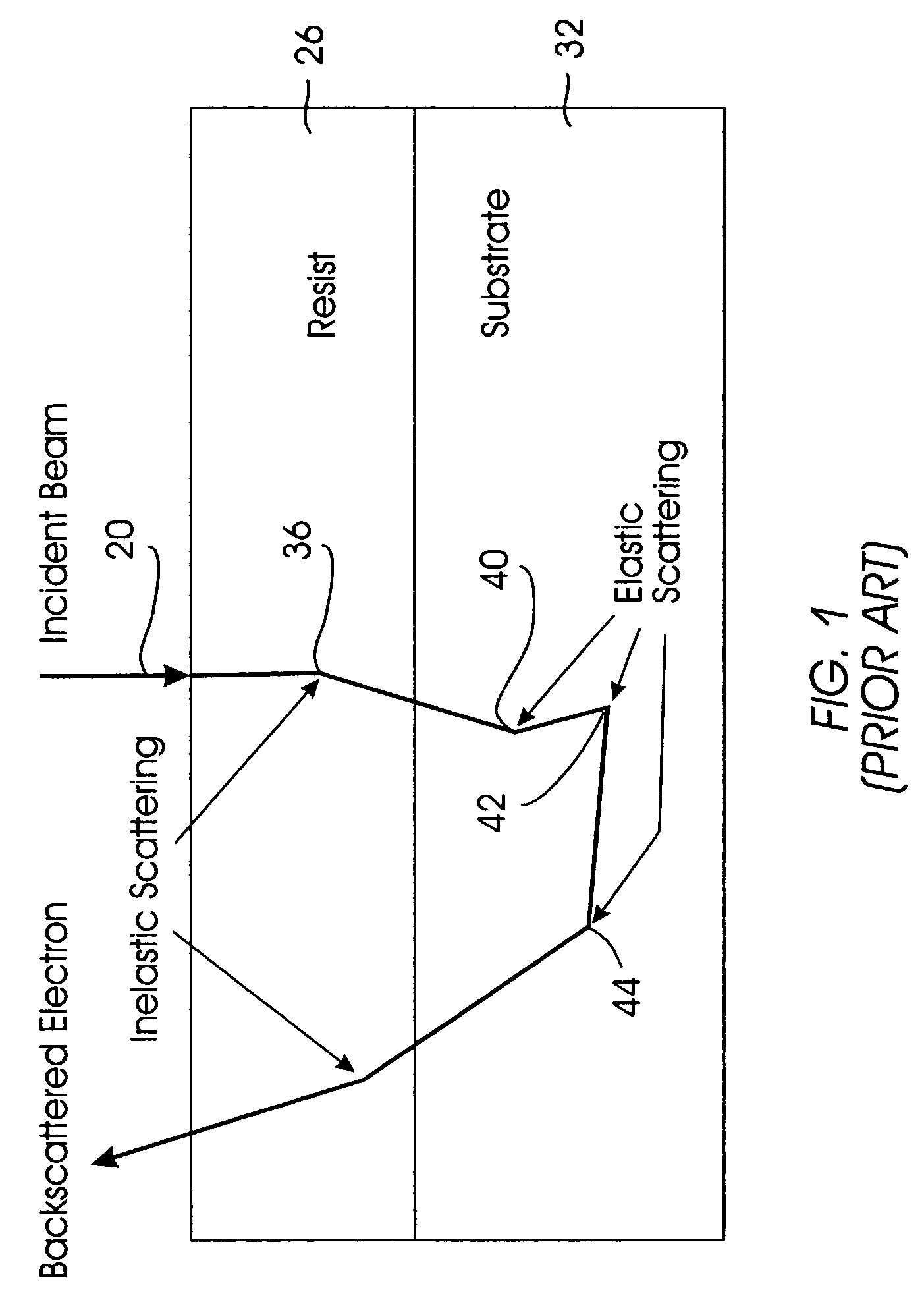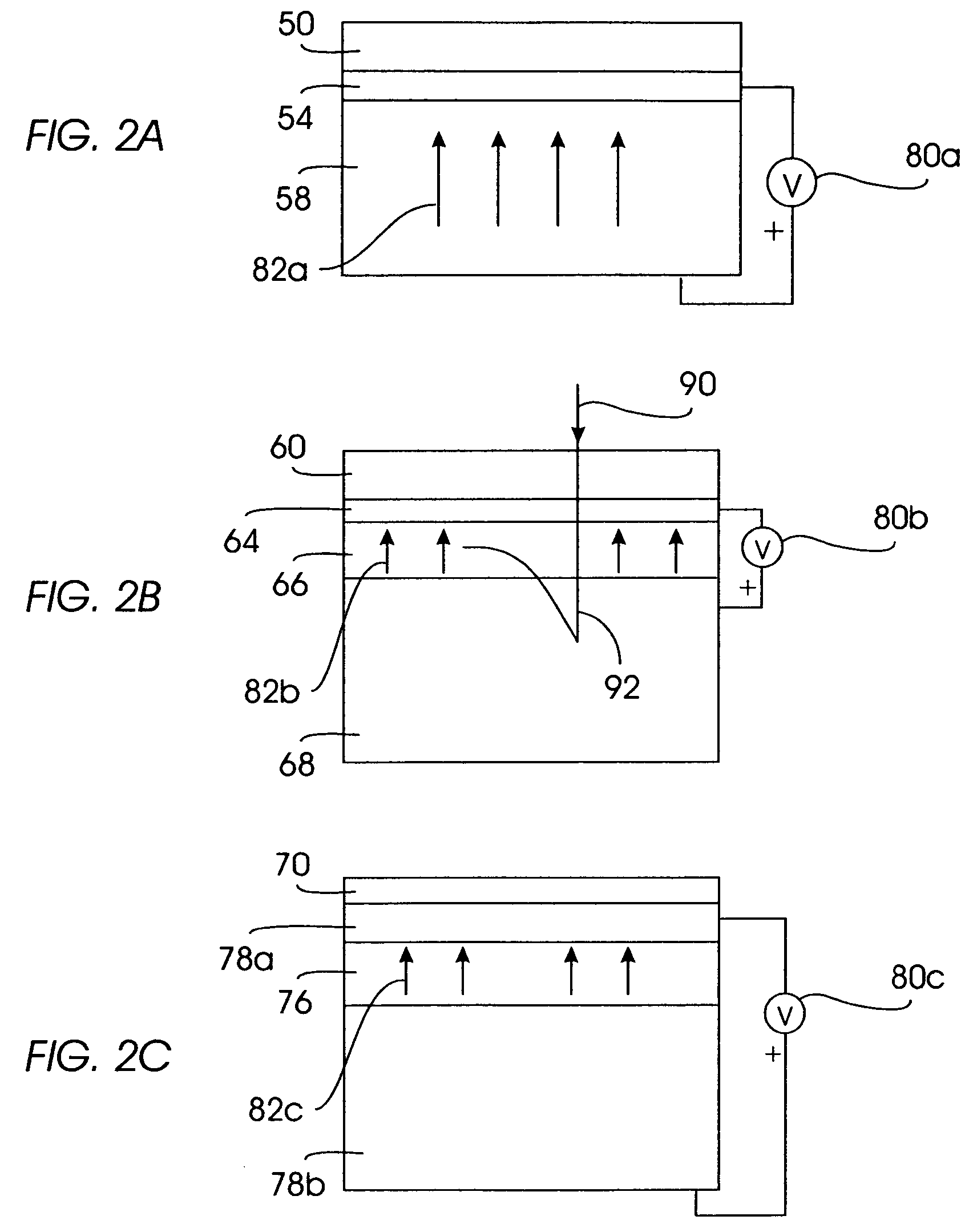Method for reducing proximity effects in electron beam lithography
a technology of electron beam and proximity effect, applied in the field of electron beam lithography, can solve the problems of small broadening that arises from this kind of scattering, is not important for thin resists at high beam energies, and is limited by the spot size of the incident, so as to achieve the effect of reducing the proximity effect of electron scattering, reducing the energy deposited, and high electric fields
- Summary
- Abstract
- Description
- Claims
- Application Information
AI Technical Summary
Benefits of technology
Problems solved by technology
Method used
Image
Examples
Embodiment Construction
[0029]Preferred implementations of the invention disclosed herein mitigate electron scattering effects that would otherwise make it difficult to achieve high resolution, well-defined features in resist material using electron beam lithography. By modeling the behavior of electron scattering by atoms in the substrate 32 (see FIG. 1), it is possible to demonstrate how applying an electric field to the substrate can mitigate deleterious scattering effects, thereby making it possible to improve the resolution of features formed in the resist 26. The scattering of electrons by atoms can be modeled by considering that both elastic and inelastic scattering of electrons can occur, and that both kinds of scattering affect the mean free path λ of electrons propagating through a material. If the total elastic cross section and the total inelastic cross section are denoted by σe and σin, respectively, then
[0030]λ-1={ΣiNi(σie+σiin)}(1)
in which the summation is over the different types of parti...
PUM
| Property | Measurement | Unit |
|---|---|---|
| electric field strength | aaaaa | aaaaa |
| electric field strength | aaaaa | aaaaa |
| electric field | aaaaa | aaaaa |
Abstract
Description
Claims
Application Information
 Login to View More
Login to View More - R&D
- Intellectual Property
- Life Sciences
- Materials
- Tech Scout
- Unparalleled Data Quality
- Higher Quality Content
- 60% Fewer Hallucinations
Browse by: Latest US Patents, China's latest patents, Technical Efficacy Thesaurus, Application Domain, Technology Topic, Popular Technical Reports.
© 2025 PatSnap. All rights reserved.Legal|Privacy policy|Modern Slavery Act Transparency Statement|Sitemap|About US| Contact US: help@patsnap.com



